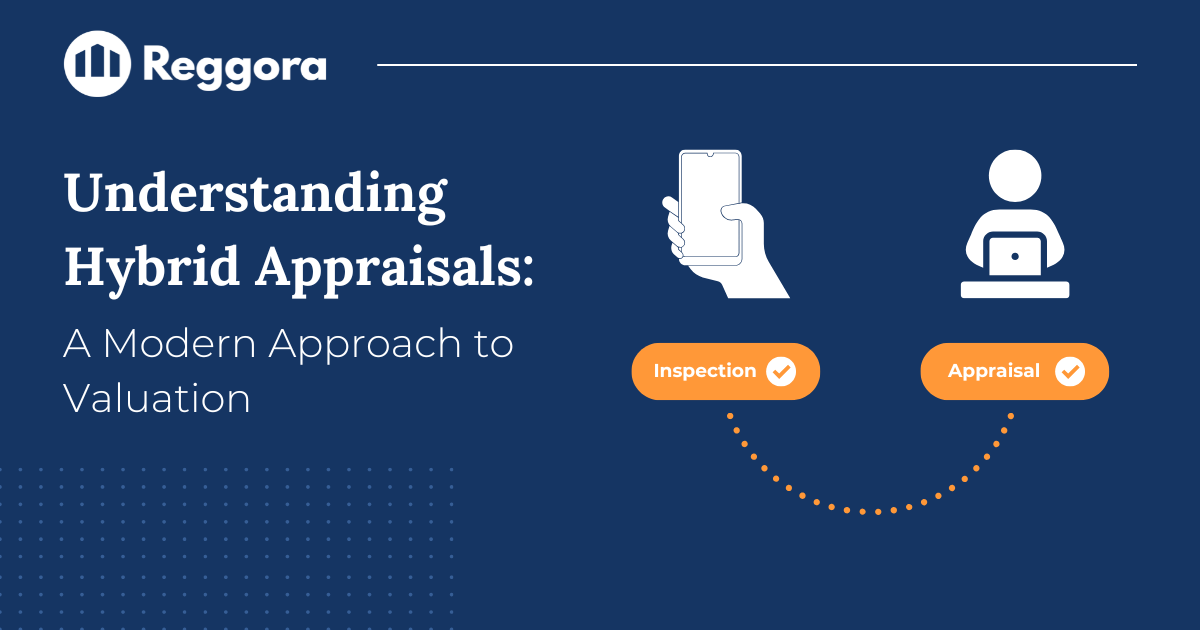How to stop losing money on uncollected appraisal fees

Lenders routinely look for sustainable ways to reduce their cost per loan. And they should. Mortgage lending is a notoriously low margin business. In boom times, it’s easy to brush the problem off but, when volume contracts like it has the past couple of years, every bit of margin matters.
Fortunately, there’s a simple way to reduce operating costs that is often overlooked: appraisal fees. In this guide, we'll take a detailed look at the three areas where you lose revenue from these fees - supported by STRATMOR Group's 2023 data - and show you how simple it can be to stop the bleeding.
Three Ways You Lose Revenue From Appraisal Fees
1. Deal Fallout
The most obvious source of revenue leakage is deals that fall through. Here’s a common scenario: you've ordered an appraisal for a loan, planning to collect appraisal payment at close, but the borrower got poached by another lender after you pulled credit. It happens all the time. Your competitors buy lead lists of these credit checks so they can try to steal your borrower by offering a lower rate, free points, etc. You've already invested time, effort, and money, and yet the entire appraisal fee is lost. It may seem small, or just “the cost of doing business”, but it adds up. Let's put this into perspective: according to STRATMOR Group's collaboration with Reggora, lenders eat the appraisal fee when deals fall through on 13% of their loans. Now, let’s imagine you originate 2,000 loans per year - that's 260 potential lost appraisal fees. At an average appraisal cost of $629, you're looking at $163,540 in lost appraisal fees. And that’s just from the deals that fall through.
2. Fee Escalations (that don’t qualify for a change of circumstance)
You don’t just lose money when the entire deal falls through. Fee escalations add up too. Specifically, escalations that don’t qualify for a change of circumstance. Picture this: an appraiser escalates the fee because they don't want to travel all the way out to that rural property. And, because you didn’t disclose enough up front to cover the appraiser’s increase, you have to eat the extra cost. According to the same study we did with STRATMOR Group, the average lender loses the fee escalation on just over 14% (14.2%) of their loans. Again, if you originate 2000 loans annually, that translates to 284 fee escalations. With an average escalation cost of $181, you're taking a loss of $51,404 per year.
3. Credit Card Processing Fees
Almost every borrower pays the appraisal fee with a credit card. Unfortunately, lenders often have to eat the credit card processing fees. In fact, over half do. A total of 53% of lenders absorb these fees, according to the data. If you’re doing 2000 loans a year, the average credit card processing fee of 3% on an appraisal cost of $629 adds up to a loss of $37,740 annually.
That’s a total of $252,684 in unnecessary costs. And that’s just for lenders that lose the average amount. You’d be surprised how many lenders we work with that lose revenue far more often than average.
Three Simple Solutions to Stop the Losses
1. Collect Payment Upfront
The key here is to not get stuck paying the fee if the deal falls through. Our modern payment solution allows borrowers to conveniently pay online, right from their phone. This eliminates the risk of losing the entire appraisal fee due to deal fallout. In addition, your production staff doesn’t have to worry if, when or how an AMC (if you use them) is going to collect payment. It’s all done upfront, in your branding, and the LO knows exactly when the link goes out. This means no surprises, and no suspicious link from a vendor the borrower has never heard of.
2. Disclose the Correct Amount Upfront (or use vendors that don’t unnecessarily escalate)
You can avoid these fee escalation losses by disclosing the accurate amount (or more) upfront. Without up-to-date data, that’s difficult. But with Reggora's nationwide fee data you can enable automatic upfront disclosures. Alternatively, you can use vendors that don’t unnecessarily escalate fees. Take The Appraisal Marketplace for example. Its fee escalation rate is 1% — compared to the industry average of 14.2%. By using a vendor like this, you completely mitigate the risk of unnecessary fee hikes. And, for your LO’s that feel like it helps win business, they’ll have a nice low appraisal cost on the disclosure.
Note: Your first 10 appraisals are free if The Appraisal Marketplace doesn’t deliver them on time. And that offer is good for each new geography you roll it out in.
3. Bundle the Credit Card Processing Fee & Appraisal Fee:
Let borrowers cover both the credit card processing fee and the appraisal fee. Bundling these fees ensures that you're not bearing the cost. With Reggora, it's easy to implement this solution, and ensure compliance. Note: If your compliance team needs to go through the details, we can walk them through the CFPB’s TILA-RESPA Integrated Disclosure (“TRID”) rule. Passing the processing fee in this way doesn’t violate it, but there’s some misinformation that sometimes makes teams feel otherwise. We’re happy to help everyone through that.
Ready to Eliminate these Losses?
Don't let losses from appraisal fees continue to erode your profitability. Schedule a complimentary, 30-minute consultation with our team. In this private consultation, we’ll show you your current revenue leakage, compare it with peers using STRATMOR Group's 2023 data, and walk you through the three simple solutions outlined above.








.svg)